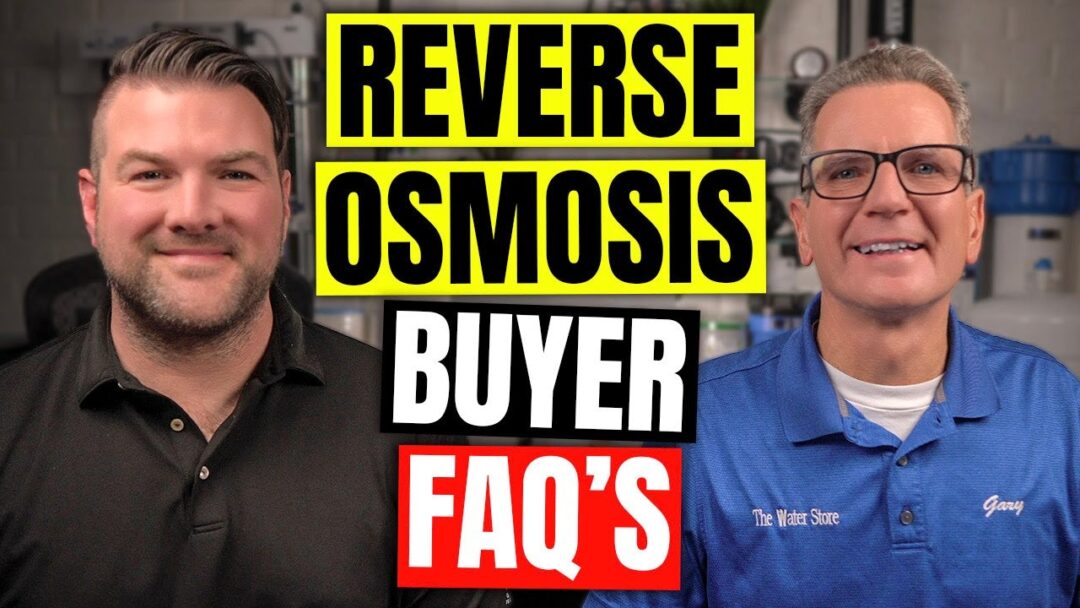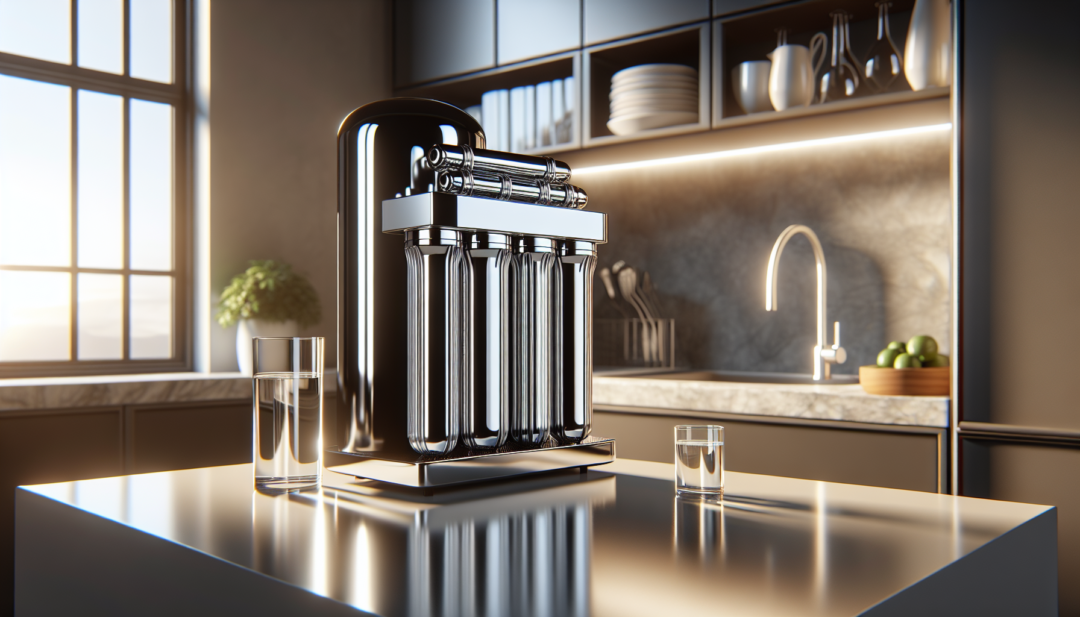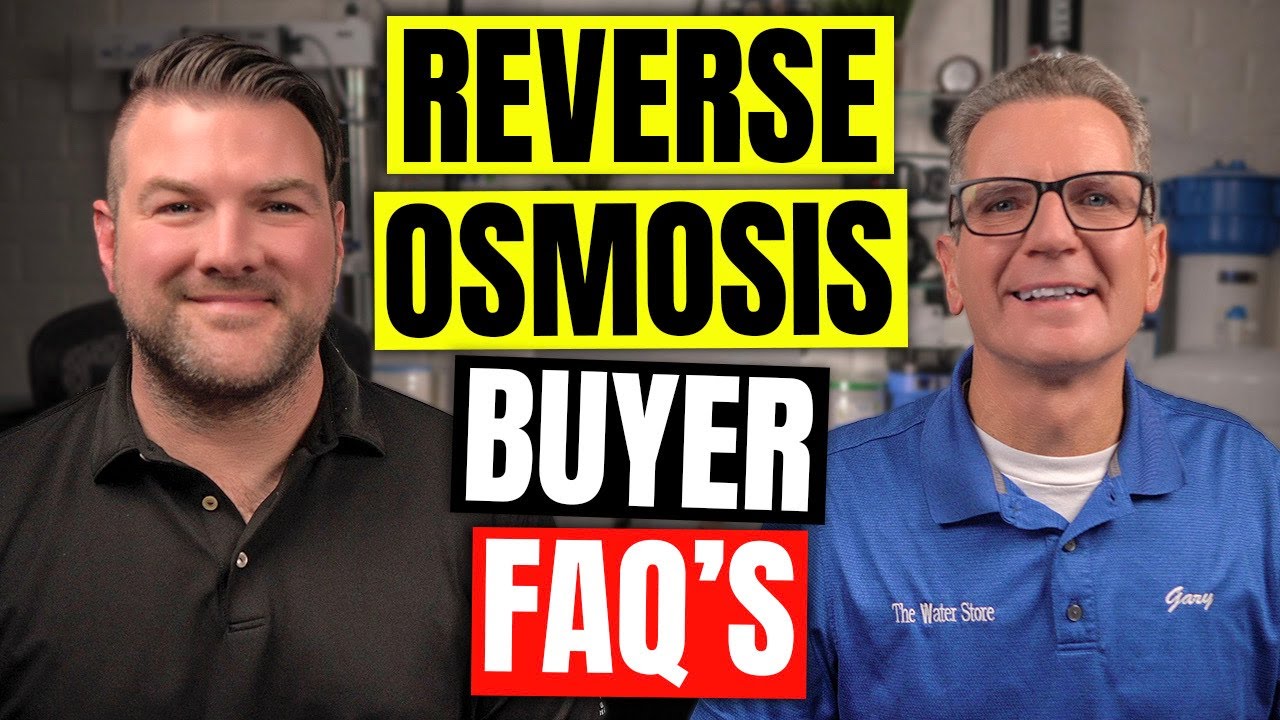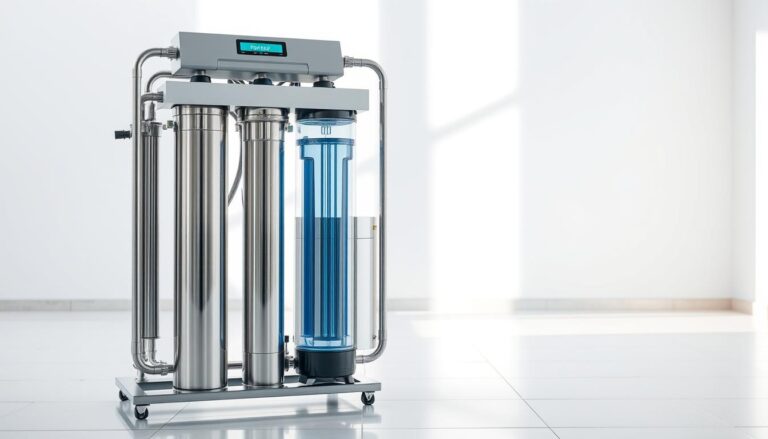12 Key Questions Before Buying a RO Water System
If you’re on the hunt for the ideal Reverse Osmosis System, you’re in great company! In this guide, you’ll join Jon and an engaging team as they explore 12 vital questions to ask before diving into your purchase. Understanding these key points will equip you with the knowledge needed to choose a system that offers your family pure, clean drinking water. It’s all about making an informed choice that suits your unique needs.
After exploring how these systems work and learning some practical installation tips, you’ll feel confident in your decision-making process. The discussion also touches on important comparisons like a $40 Brita Filter versus a sophisticated $500 RO Filter, helping you see what really makes the grade. So, if you’re ready to ensure your family enjoys the best water possible, this journey will offer you everything you need with a friendly and informative perspective.
Understanding the Basics of Reverse Osmosis Systems
How does a reverse osmosis system work?
Reverse osmosis (RO) is a water filtration method that removes impurities from water by using pressure to force water molecules through a semipermeable membrane. This membrane blocks impurities and contaminants, such as salts, bacteria, and viruses, from passing through. In essence, reverse osmosis works by pushing water through the membrane from a more concentrated solution to a less concentrated one, effectively purifying the water. This process ensures that you get clean and safe drinking water, making it a popular choice for homeowners looking to improve the quality of their tap water.
What are the key components of a reverse osmosis system?
A reverse osmosis system comprises several key components that work in unison to purify your water. The primary components include the pre-filter, which removes larger particles like dirt and sediment; the semipermeable membrane, which is the core of the system, eliminating most contaminants; and the post-filter, which polishes the water before it reaches your tap. Additionally, these systems often contain storage tanks that hold filtered water until needed and a dedicated faucet where the purified water is dispensed. Some systems might also include a carbon filter to reduce chlorine and enhance taste.
Assessing Your Water Quality Needs
What are the specific contaminants in my water that need to be filtered?
Before purchasing a reverse osmosis system, it’s crucial to identify the specific contaminants present in your water. Common contaminants include lead, arsenic, nitrates, chlorine, and pharmaceuticals, each of which can impact your health differently. Some water supplies might also contain biological contaminants such as bacteria and viruses. Understanding what’s in your water will help you choose a system that effectively targets and removes these substances, ensuring the water you consume is safe and free from harmful agents.
How do I test my water quality before purchasing an RO system?
Testing your water quality is a vital step in identifying the contaminants present. You can conduct this analysis using home test kits available at most hardware stores, which are easy to use and provide immediate results for common contaminants like chlorine, nitrates, and pH levels. For more comprehensive testing, you may opt to send a sample to a certified laboratory, which can provide detailed information about a wide range of potential contaminants. Understanding your water’s specific needs can guide you in selecting the right reverse osmosis system.

This image is property of i.ytimg.com.
Understanding Different Types of RO Systems
What is the difference between point-of-use and whole-house RO systems?
Point-of-use (POU) and whole-house RO systems serve different purposes. POU systems are typically installed at a single location, such as under the kitchen sink, to provide purified water for drinking and cooking. In contrast, whole-house systems are installed at the point where water enters your home, purifying all the water used throughout the residence, from the kitchen to the bathrooms. POU systems are ideal if your primary concern is drinking water, while whole-house systems are better suited for those who wish to have filtered water for all household activities.
Which type of reverse osmosis system is best suited for my home?
Choosing between a point-of-use or a whole-house RO system depends on your specific water needs and budget. If you’re primarily concerned with the quality of your drinking and cooking water, a POU system may be most appropriate and cost-effective. However, if your water supply has contaminants that could affect other uses—like bathing or laundry—a whole-house system might be more beneficial, despite its higher initial cost. Evaluating your water usage habits and needs will help determine the best fit for your home.
Evaluating System Capacity and Size
What is the daily water output capacity of the system?
The daily water output capacity of an RO system is a critical factor you need to consider. Most point-of-use systems generate between 50 to 100 gallons per day, which is typically sufficient for an average household. Whole-house systems, on the other hand, boast a much higher output capacity to meet the demands of all water-related activities in the home. Assessing your daily water consumption and selecting a system that aligns with your requirements ensures a consistent supply of filtered water and optimizes the system’s performance.
How much space do I need to install the system?
Before purchasing an RO system, consider the available space for installation. Point-of-use systems usually fit neatly under kitchen sinks, requiring little space and minimal modification. However, whole-house systems can be more cumbersome, often requiring a larger area near where your main water line enters your home. Ensuring you have adequate space for the storage tanks and filtration units is essential for maintaining system efficiency and ease of access for maintenance and potential repairs.

Considering Maintenance Requirements
How often do filters and membranes need to be replaced?
RO systems require regular maintenance to function effectively, with filter and membrane replacement being critical components of this upkeep. Generally, pre-filters and post-filters should be replaced every 6 to 12 months, while the membrane often lasts between 2 to 5 years, depending on the water quality and system usage. Timely replacement of these components is crucial to ensure the system continues to filter water effectively, maintaining both water quality and the longevity of the system itself.
What is the cost of ongoing maintenance for an RO system?
The cost of ongoing maintenance for an RO system varies based on the type of system and your specific water quality. Replacing filters and membranes typically costs anywhere from $50 to $200 per year, but this can fluctuate with more sophisticated systems or if water quality is particularly poor. Understanding these costs before purchase can help you budget effectively and ensure that your system remains in optimal working condition, providing you with safe, clean water without unexpected expenses.
Analyzing the Installation Process
Can I install the system myself, or do I need professional installation?
Many RO systems are designed for DIY installation, especially point-of-use units, which come with detailed instructions and all necessary hardware. If you’re reasonably handy, you might find the installation straightforward. However, whole-house systems often require professional installation due to their complexity and integration with the home’s plumbing system. Assessing your comfort level with plumbing tasks and understanding the system’s installation requirements will help you decide whether professional installation is needed.
What tools and materials are required for installation?
The tools and materials needed for installing an RO system vary based on the type of system. For point-of-use installations, you typically need a drill, adjustable wrench, and possibly a tubing cutter. The system packages often include the necessary fittings and housings. Whole-house systems may require more extensive tools and materials, including additional plumbing fixtures and piping, which are better handled by professionals. Knowing what’s required beforehand can help you prepare adequately and avoid delays during the installation process.

Calculating Long-term Costs and Savings
What is the initial cost of purchasing a reverse osmosis system?
The initial cost of purchasing an RO system can vary significantly based on the system’s type and capacity. A basic point-of-use RO system might cost between $150 and $600, while comprehensive whole-house systems can range from $1,000 to $5,000 or more. Consider these costs alongside potential installation fees and long-term maintenance expenses to get a clear picture of the total investment you’re making. This knowledge helps you choose a system that not only meets your needs but also fits your budget.
How do water savings compare to the cost of bottled water?
Over time, using an RO system can lead to significant savings compared to buying bottled water. The average cost of bottled water can add up quickly, especially for families or larger households. In contrast, the cost per gallon of filtered water from an RO system is drastically lower. By investing in an RO system, you not only save money but also reduce your environmental footprint by minimizing plastic waste. Calculating these long-term savings can justify the initial investment and ongoing maintenance costs of the system.
Reviewing Warranty and Customer Support
What type of warranty is offered with the system?
Most reputable RO systems come with warranties that cover parts and defects for a specific period, usually ranging from one to five years. It’s essential to thoroughly review the warranty details before purchasing, ensuring it covers critical components like the membrane and storage tank. A solid warranty provides peace of mind and assurance that the manufacturer stands behind their product’s quality, offering protection against potential defects and issues during the system’s early years.
How responsive is the manufacturer’s customer support team?
Effective customer support is vital when dealing with technical products like RO systems. Before purchasing, research the manufacturer’s reputation for responsiveness and the quality of their customer service. Prompt and knowledgeable support can significantly enhance your experience, especially if you encounter issues or have questions about installation, maintenance, or operation. Manufacturers with robust support infrastructures can provide valuable assistance, ensuring your system remains functional and efficient.
Examining System Certifications and Standards
Does the system meet NSF/ANSI standards for water filtration?
Certifications by organizations like NSF International and the American National Standards Institute (ANSI) offer assurance that a product meets established health and safety standards. For RO systems, these certifications are crucial as they demonstrate that the system effectively removes the contaminants it claims to. Verifying that an RO system meets NSF/ANSI standards ensures you invest in a product that has been rigorously tested and evaluated for its filtration capabilities and overall performance.
What certifications should a reliable reverse osmosis system have?
In addition to NSF/ANSI certifications, a reliable RO system might also have certifications from other reputable bodies, such as the Water Quality Association (WQA). These certifications indicate that the product has undergone stringent testing for quality and performance. The certifications ensure that your system complies with industry standards for water filtration, providing you with safe and pure water. Checking for these marks of quality and reliability before purchase can significantly influence your choice and satisfaction with the system.
Conclusion
Recap of the essential questions to ask before purchasing an RO system
Before purchasing a reverse osmosis system, critical questions revolve around understanding its workings, evaluating your water quality needs, and identifying the right type of system for your home. It’s important to consider the system’s capacity, space requirements, maintenance schedule, installation process, and long-term costs. Furthermore, assessing the warranty, customer support, and whether the system meets essential certification standards is crucial to ensure a sound investment.
Final thoughts on making an informed purchasing decision
Making an informed decision about buying a reverse osmosis system involves thorough research and understanding of your household needs. By addressing these essential questions, you empower yourself to select a system that delivers high-quality, safe drinking water while also fitting your budget and lifestyle. With this guide, you are well-prepared to choose a reverse osmosis system that best meets your requirements and enjoy the benefits of pure, clean water in your home.







